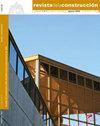相对密度对细粒砂液化势的影响
IF 1.4
4区 工程技术
引用次数: 1
摘要
液化是一种土壤抵抗力的丧失,在人类生命和物质损失方面可能导致灾难性和昂贵的后果,因此本实验室研究的兴趣。本文探讨了除细粒含量这一主要参数外,相对密度对土壤液化势的影响。该研究基于大量不排水的单调三轴试验,这些试验是对初始相对密度为15%至90%的6个水平的饱和砂和粉土混合物进行的。所使用的材料是从Mostaganem省Kharouba沿海地区的不同深度征收的。在本实验中,砂粉混合物被分离形成研究样品。本工作的目的一方面是确认和更新先前工作的结果(Bensoula et al., 2018),另一方面是研究相对密度对土壤液化潜力的影响,并引入相对密度阈值的概念。试验结果证实,根据等效粒间空隙和等效相对密度,所研究的土壤在0 ~ 30%的细粒含量之间最可能液化。这些参数是表征土壤液化敏感性的基本参数。本研究结果表明,随着相对密度的增大,液化阻力呈线性增长,直至根据细粒含量给定的阈值相对密度值,这意味着增加相对密度可以提高液化阻力,但仅达到根据细粒含量给定的相对密度阈值本文章由计算机程序翻译,如有差异,请以英文原文为准。
Relative density influence on the liquefaction potential of sand with fines
Liquefaction is a loss in soil’s resistance which can lead to disastrous and expensive consequences in terms of human lives and material damages, hence the interest of this laboratory study. The article explores the relative density influence in addition to the main parameter of the fines content on the liquefaction potential of soils. The study is based on a very large number of undrained monotonic triaxial tests undertaken on samples of reconstituted saturated sand and silt mixtures with 6 levels of initial relative density ranging from 15 to 90%. The materials used are levied from different level of deepness in the coastal region of Kharouba in the wilaya of Mostaganem. In this experiment, the sand-silt mixtures were separated to form the study samples. The aim of this work is, on one hand, to confirm and update the results of previous works (Bensoula et al., 2018) and on the other hand the study of the influence of relative density on the liquefaction potential of soils and the introduction of the concept of relative density threshold. The results of the tests confirm that the studied soil is most likely to be liquefied at a fines content between 0 and 30% depending on the equivalent intergranular voids and the equivalent relative density. These parameters are primordial for the characterization of soils sensitivity to liquefaction. In this study, the results showed that the resistance to liquefaction increases in a linear way with the relative density up to a threshold relative density value according to the fines content, which means that increasing the relative density improves the liquefaction resistance but only up to a threshold value of relative density given according to fines content
求助全文
通过发布文献求助,成功后即可免费获取论文全文。
去求助
来源期刊

Revista de la Construccion
工程技术-工程:土木
CiteScore
2.30
自引率
21.40%
发文量
0
期刊介绍:
The Journal of Construction is aimed at professionals, constructors, academics, researchers, companies, architects, engineers, and anyone who wishes to expand and update their knowledge about construction. We therefore invite all researchers, academics, and professionals to send their contributions for assessment and possible publication in this journal. The publications are free of publication charges.
OBJECTIVES
The objectives of the Journal of Construction are:
1. To disseminate new knowledge in all areas related to construction (Building, Civil Works, Materials, Business, Education, etc.).
2. To provide professionals in the area with material for discussion to refresh and update their knowledge.
3. To disseminate new applied technologies in construction nationally and internationally.
4. To provide national and foreign academics with an internationally endorsed medium in which to share their knowledge and debate the topics raised.
 求助内容:
求助内容: 应助结果提醒方式:
应助结果提醒方式:


